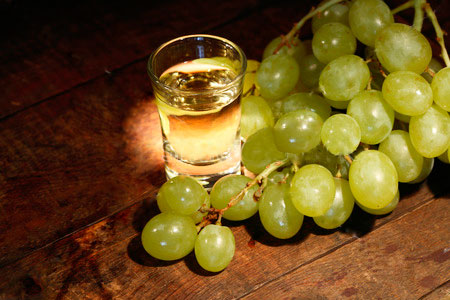Since the 15th century, zivania has been the island's local drink, used by both Turkish and Greek Cypriots. Grape pomace and local dry wines are mixed together and go through the production system to create a very unique and strong alcoholic drink. It's alcohol volume is usually 45% but different versions vary and some home-made versions get to more than 60% and are not very safe.Fun fact, when the presidents of both sides for the very first time went through the borders together, they had coffee in the North and then finished almost a bottle of Zivania in the south.
It is usually drank as shots and in groups, served with fruit.
Zivania has many uses other than just being an alcoholic drink, it is used to treat colds, sore body parts are massaged with it, cleaning wounds is another use and it is also used even for toothache.
"For personal reason a brief part of the article before the ways of making Zivania is not available in the online version"
Finally, this is how zivania is made;
"In order to produce zivania of the highest grade, mature healthy grapes of the best quality are used. The grape must used for the fermentation should be of less than 13° Baumé, in order to get complete fermentation. As soon as the fermentation process completes (i.e. producing less or equal to 0° Baumé reading) the wine and pomace mixture is transferred to the main container of the distillation apparatus, called kazani (Greek: καζάνι) and the distillation process begins. The first zivania that comes from the distiller has the highest alcohol content, while the last taken out of the apparatus has a low alcohol content and it is called porakos (Greek: πόρακος). Depending on the pre-distillation mixture, different qualities of zivania are produced:
Zivania produced by using only wine the distillation
Zivania produced by using wine and pomace for the distillation
Zivania produced by using pomace, water and weak zivania" (retrieved from Wikipedia)
The following video is a demonstration of one of the methods;



No comments:
Post a Comment